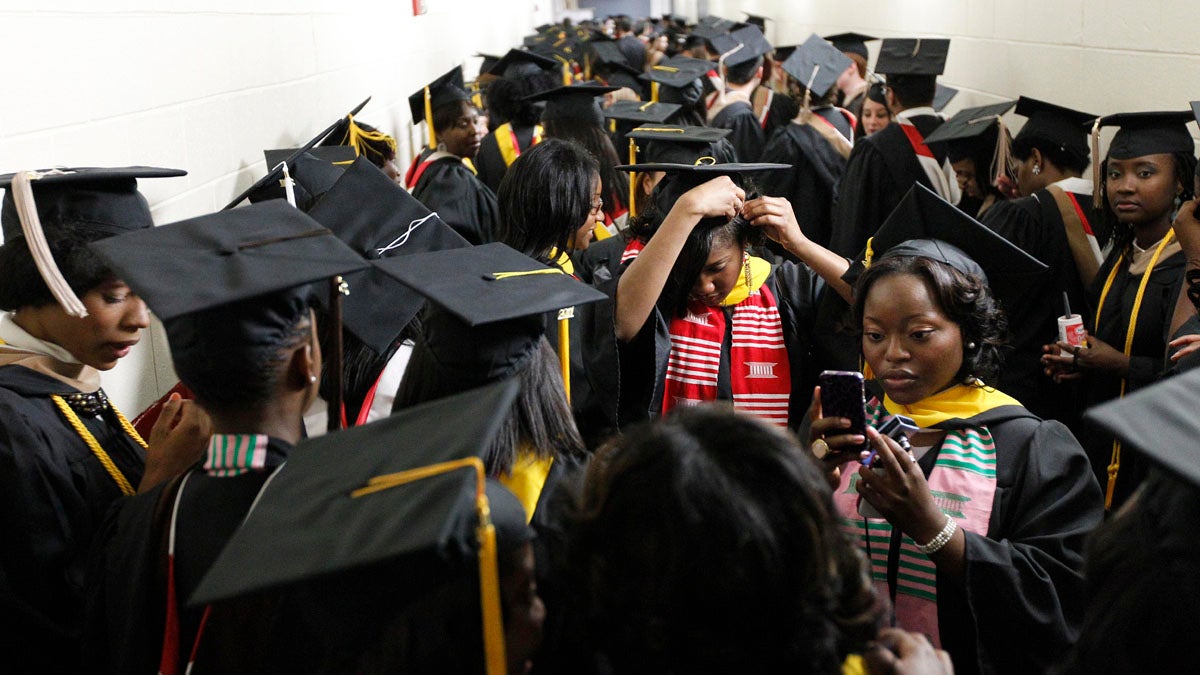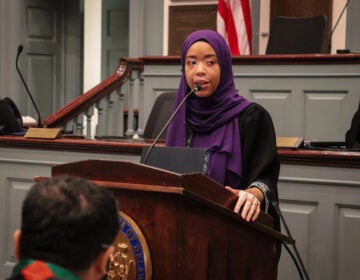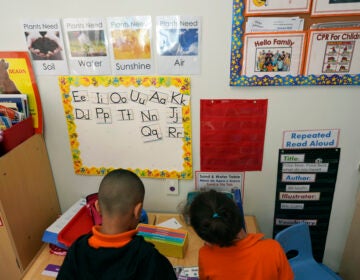College in Pa. beyond reach of most low- and middle-income families

Members of Temple University's Class of 2011 wait to begin their graduation march. Pennsylvania's public research institutions — Penn State
College affordability in Pennsylvania ranks as second worst state in the country, according to a new report.
The national report, 2016 College Affordability Diagnosis, documents how higher education has gone from expensive to unaffordable for most low- and middle-income families.
The study, which compared each state’s college costs in relation to family income, was conducted by the University of Pennsylvania Graduate School of Education, Vanderbilt University’s Peabody College and the Higher Education Policy Institute.
Pennsylvania ranks 49th out of 50, while New Hampshire is dead last. New Jersey placed 10th and Delaware was 16th. Still, college affordability has declined in all 50 states since 2008.
“The [college] affordability problem is now contributing to the stratification we see by income in our society,” said Joni Finney, one of the report’s authors. “Higher education alone can’t solve that problem, but unless we use higher education as a strategic tool, I think the stratification of income in America will become worse.”
Finney, director of Penn’s Institute for Research on Higher Education, said that while Pennsylvania offers well above the national average in financial aid, it doesn’t keep up with rising tuition.
“Pennsylvania has moved from a system of high tuition, high financial aid to a system of high tuition, high debt for students,” she said.
One reason the Keystone State ranks next to last is that Pennsylvania’s public institutions are among the least affordable nationwide. Every sector of Pennsylvania’s higher education is less affordable than it was nearly a decade ago.
That includes community colleges and state-owned universities, which are “the workhorses” for low- and middle-income families.
“The fact that they’ve been priced out of reach for most of those families, those families earning $75,000 or less, is a big problem for the state,” she said.
The state’s two-year public and four-year public institutions rank in the bottom half of the country in affordability.
“I was surprised that the institutions that we’ve always thought of as open access, our safety net institutions, are now unaffordable for most,” the Penn professor of higher education said. “It’s just become … unrealistic for families to be able to shoulder the kind of debt burden that they would have to.”
Pennsylvania’s public research institutions — Penn State, Temple and the University of Pittsburgh — are the most expensive in the country.
A family would have to spend, on average, nearly half of its income — 47 percent — to pay for full-time attendance at one of those schools.
Stagnant family income also puts college out of reach.
“The income of families [making $48,000 or less] has remained flat since the recession. So their incomes really aren’t growing. For them, we are still in a recession,” Finney said.
Nearly a third of all Pennsylvania students attend private nondoctoral institutions — small, private, liberal arts college, according to the report.
Finney said there are economic reasons to address this issue now.
“We are going to have another recession,” she said. “We’ve had one or two every decade, and we have to plan for that — or this problem will only get worse for the state. Putting this off or kicking this can down the road isn’t a good option for Pennsylvania citizens.”
President Barack Obama and Pennsylvania Gov. Tom Wolf both have set ambitious goals of helping more students finish college. Wolf wants to have 60 percent of Pennsylvanians earn a college diploma by 2025.
But Finney said rising college costs puts Wolf’s goal in doubt.
“Pennsylvania and many other states have set these lofty goals in terms of improving the education attainment of the population in order to meet workforce demand,” she said. “But it’s not likely that that goal is achievable for the state unless they have a long-term plan to address the public finance of higher education in which college affordability for students and families is the centerpiece of that plan.”
No state can meet its workforce goals if it doesn’t educate more low- and middle-income students, she added, and states have to first get students into college before they can graduate them.
The large gap that currently exists between white and black Pennsylvanians who’ve earned an associate’s degree or higher, Finney pointed out, must also be closed for Pennsylvania to be competitive.
WHYY is your source for fact-based, in-depth journalism and information. As a nonprofit organization, we rely on financial support from readers like you. Please give today.




